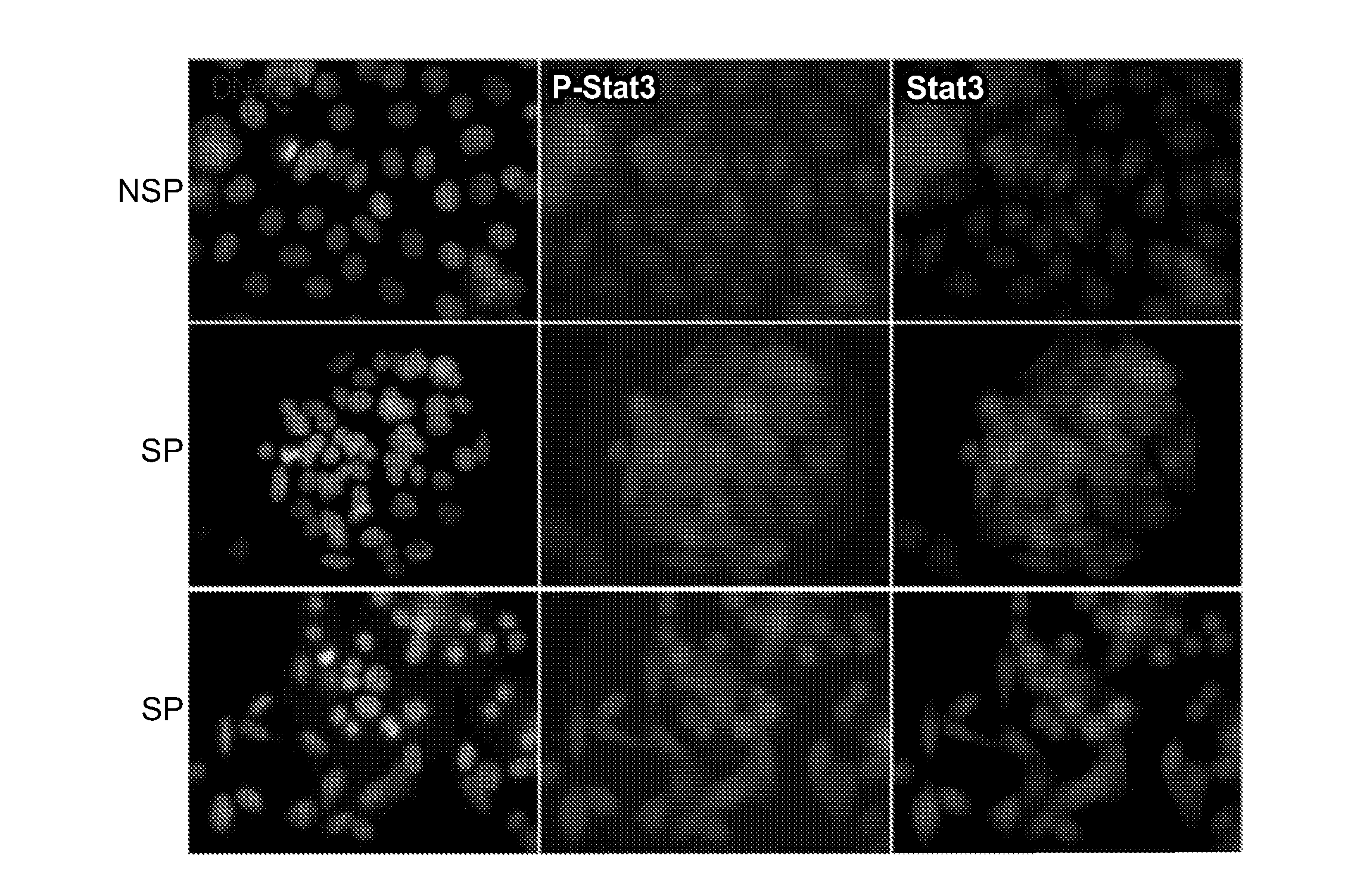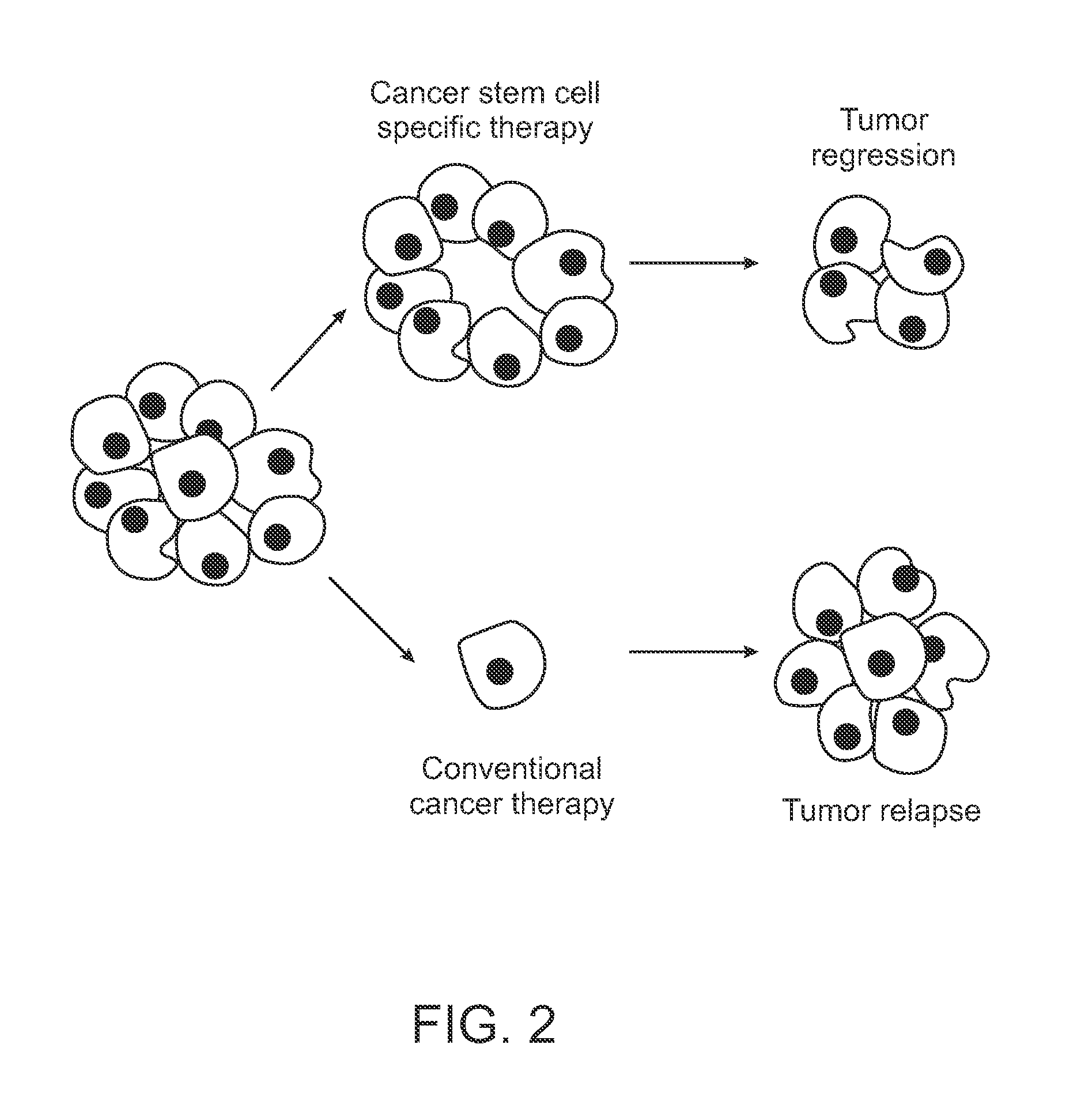Novel stat3 pathway inhibitors and cancer stem cell inhibitors
a stat3 pathway and inhibitor technology, applied in the field of new stat3 pathway inhibitors and cancer stem cell inhibitors, can solve the problems of cancer stem cells that are radioresistant and refractory to chemotherapeutics, not all cancer cell lines contain cancer stem cells, and relapse of disease, so as to reduce the unsatisfactory stat3 pathway activity in the cell
- Summary
- Abstract
- Description
- Claims
- Application Information
AI Technical Summary
Benefits of technology
Problems solved by technology
Method used
Image
Examples
example 1
Preparation of Sodium Salt of 2-hydroxy-7-chloro-1,4-naphthoquinone 1-1 (R1═Cl)
[0253]To the solution of 10 gram (0.06 mol) of 5-chloro-1-indanone in 200 ml of ethyl ether cooled in ice bath, 22 ml (0.066 mol) of 3 M methylmagnesium bromide in ethyl ether was dropped slowly over 30 min. The reaction mixture was stirred at room temperature overnight and then evaporated to dryness. 150 ml of 2 N hydrochloric acid in 50% ethanol was slowly dropped into the residue, and then refluxed for 1 hr. The mixture was extracted with dichloromethane and then the organic phase was washed with water and dried with sodium sulfate. The intermediate product 3-methyl-6-chloro-indene was purified by silica gel chromatograph.
[0254]To a vigorously stirred solution of 18 gram of sodium dichromate hydrate, 1 gram of sodium benzene sulfonate, and 50 ml of sulfuric acid in 250 ml of water, at 55° C., 7.5 gram (0.046 mol) of 3-methyl-6-chloro-indene was added dropwise in 1 hour. The mixture was then stirred for...
example 2
Preparation of Sodium Salt of 2-hydroxy-7-fluoro-1,4-naphthoquinone 1-1 (R1═F)
[0257]Sodium salt of 2-hydroxy-7-fluoro-1,4-naphthoquinone 1-1 (R1═F) was obtained from 10 gram (0.067 mol) of 5-fluoro-1-indanone by using the procedure described in example 1 to give brick red solid: 30% yield. Mass (M-H) is 191.
example 3
Preparation of 2-hydroxy-3-(1-n-butenyl)-1,4-naphthoquinone 1-2 (R1═H, R4═CH3)
[0258]To a solution of 20 gram (0.11 moles) of 2-hydroxy-1,4-naphthoquinone in 150 ml of DMSO and 20 ml of concentrated hydrochloride (37%) solution at 75° C., 20 ml of n-butyraldehyde (0.23 mol) was added. The mixture was vigorously stirred at the temperature of 72-78° C. for 4 hours, and then cooled by addition of 300 ml of ice water, and the resulting mixture was extracted with 300 ml of dichloromethane twice. The combined organic phases was washed successively with 500 ml of water, and 500 ml of 5% sodium bisulfite, and 500 ml of 4% sodium bicarbonate, and finally extracted with 400 ml of 5% sodium carbonate twice. The combined sodium carbonate extract was neutralized by addition of concentrated hydrochloric acid to pH 7.2-7.6. After chilling to 0° C., the mixture was filtered, and the resulting brick red solid was washed with cold water and dried under vacuum. 9.6 gram of product was obtained: 38.6% y...
PUM
| Property | Measurement | Unit |
|---|---|---|
| temperature | aaaaa | aaaaa |
| temperature | aaaaa | aaaaa |
| volume | aaaaa | aaaaa |
Abstract
Description
Claims
Application Information
 Login to View More
Login to View More - R&D
- Intellectual Property
- Life Sciences
- Materials
- Tech Scout
- Unparalleled Data Quality
- Higher Quality Content
- 60% Fewer Hallucinations
Browse by: Latest US Patents, China's latest patents, Technical Efficacy Thesaurus, Application Domain, Technology Topic, Popular Technical Reports.
© 2025 PatSnap. All rights reserved.Legal|Privacy policy|Modern Slavery Act Transparency Statement|Sitemap|About US| Contact US: help@patsnap.com



